How to Identify the Differences Between Similar Products
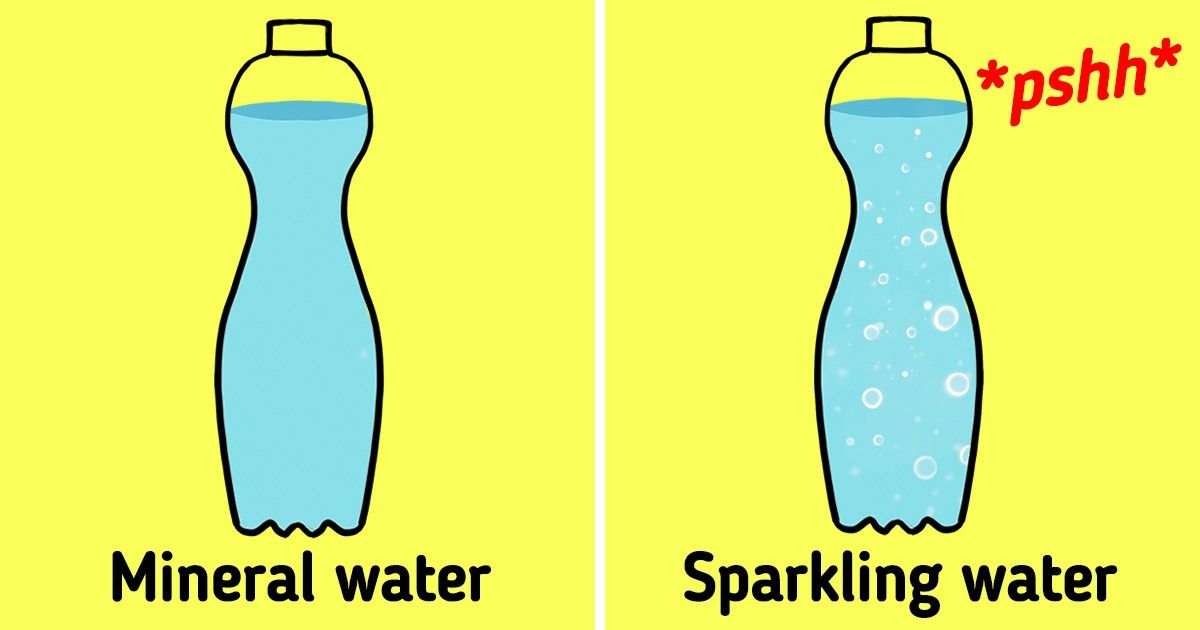
Sometimes, 2 completely different products can seem so alike that we can barely tell them apart. 5-Minute Crafts will show you the reasons why these aren’t the same.
1. Mineral and sparkling water
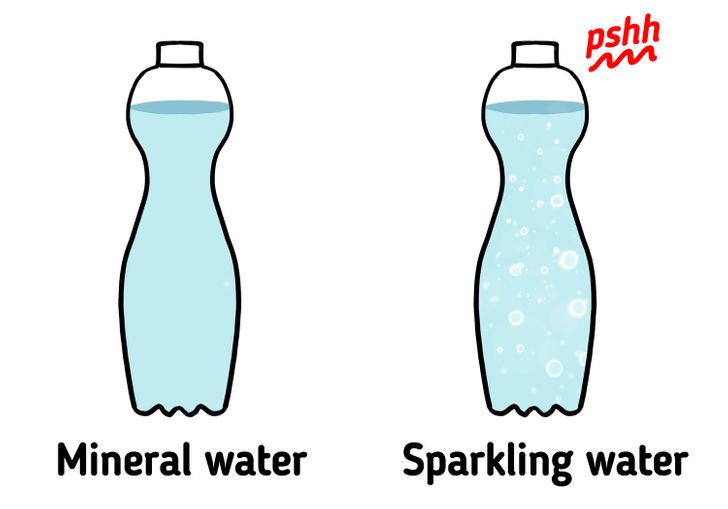
Mineral water’s minerals are usually the same before and after it leaves its original spring. No additional minerals can be added during its creation. As for sparkling water, it’s infused with carbon dioxide in order to create the bubbles and fizziness you see in it. The minerals in it frequently get removed when it’s being created.
Their main difference lies in the flavor because of the mineral content. Their price is also another thing to consider (mineral water is often the more expensive one).
Note: Mineral water needs to have 250 parts dissolved minerals per one million units of water to be considered mineral water.
2. Black and green tea
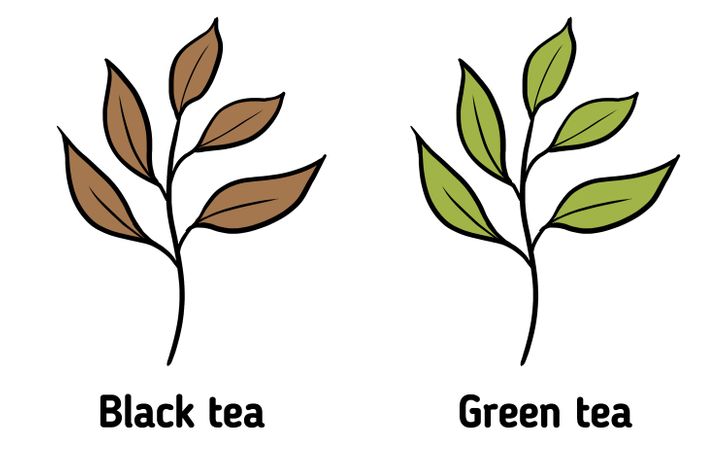
First, both of them come from the same plant (Camellia sinensis). Their color only differs because black tea’s leaves are rolled and then exposed to air, so it triggers their oxidation process (causing the dark brown color, as well as the intensity in flavor). Green tea’s leaves are processed instead to prevent their oxidation.
They’re also brewed differently. For black tea’s preparation, it’s recommended to use boiling water at around 212ºF and then to steep it for 3 to 5 minutes. Green tea, on the other hand, should use water at around 175ºF, and then it should be steeped for 1 to 2 minutes only.
Black tea’s flavor is often strong (notes of stone fruit, malt, honey, and spice). Green tea’s flavor is lighter (nutty, vegetal notes).
3. Sweet potatoes and yams
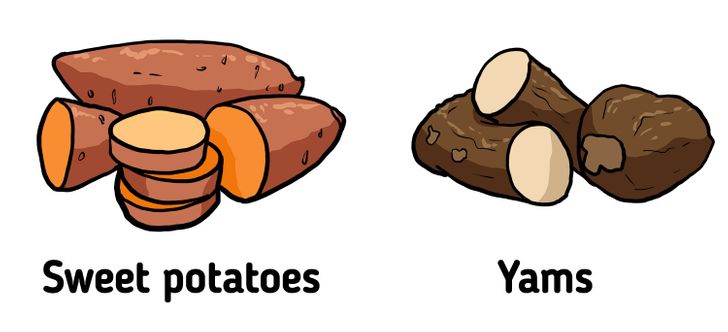
Yams and sweet potatoes belong to 2 different plant families. A key difference is that yams are not only sweeter than sweet potatoes, but they also grow larger (albeit carrying fewer nutrients).
There are also 2 varieties of sweet potatoes, one with light yellow skin and pale yellow flesh, and another that’s darker with thicker skin, a reddish tone to it, and vivid orange flesh (often confused with being a yam). The lighter-skinned one, as opposed to the darker one, isn’t sweet and has a dry and crumbly texture. They’re also elongated and tapered at their ends.
A yam, on the other hand, has a brown or black scaly skin and can resemble the bark of a tree. They can have off-white, purple, or even red flesh. Unlike sweet potatoes, yams have rounded ends.
4. Plantains and bananas
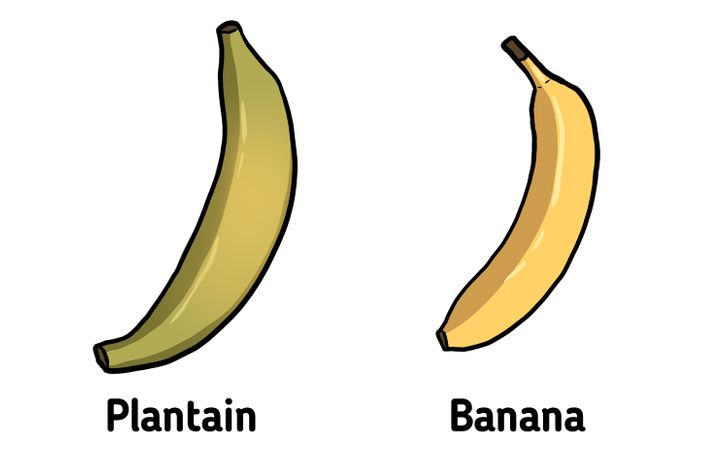
Bananas have a long and slender shape to them, and they’re covered in a thick skin. There are different kinds, but the one that’s often referred to as a “banana” in western cultures is the one that’s sweet and yellow. When unripe, they’re green, and their skin is tough to peel, but afterward, its color changes to a bright yellow, and then it turns dark brown (it also becomes easier to peel).
As for plantains, they’re larger and tougher than their banana counterparts. Their skin is much thicker too, and their color varies from green and yellow to a very dark brown.
The key difference between these fruits is that bananas can be eaten raw and cooked, while plantains can only be eaten cooked. Bananas are also sweet, unlike plantains, which are starchy.
5. Cucumbers and zucchinis
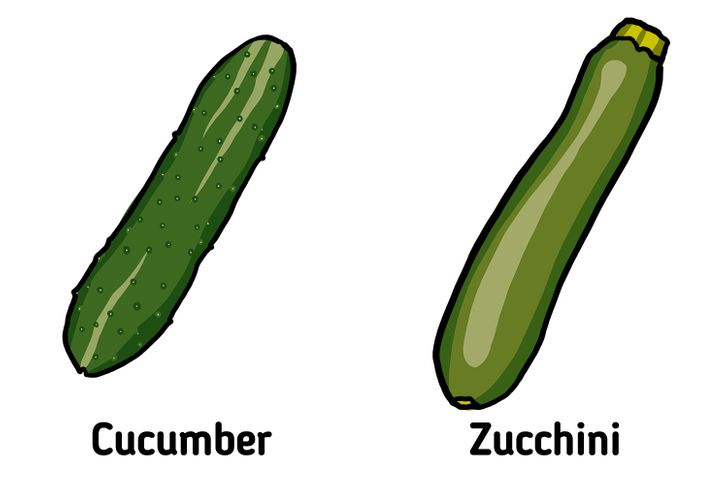
Both cucumbers and zucchinis are cylindrical and have dark green skin and pale flesh, making them hard to tell apart. However, cucumbers have a mild, lightly sweet flavor (because of their high water content), they’re crisp and refreshing to eat raw, and their skin has an earthy taste. When they’re cooked, they lose a bit of their water but still maintain a crunch.
Zucchinis have a milder flavor, and while they’re also sweet, they’re a bit bitter too. Their sweetness is brought up when they’re cooked, which also softens them. That being said, they’re tender to bite into, both cooked and raw.
You can identify both by their appearance, as zucchinis have woody stems at one end and can have a flower on the other. When cut, cucumbers have a pale green tinge, and the zucchinis, a creamy white one. Cucumbers are also hard and waxy to the touch, and zucchinis are warmer and grainy.